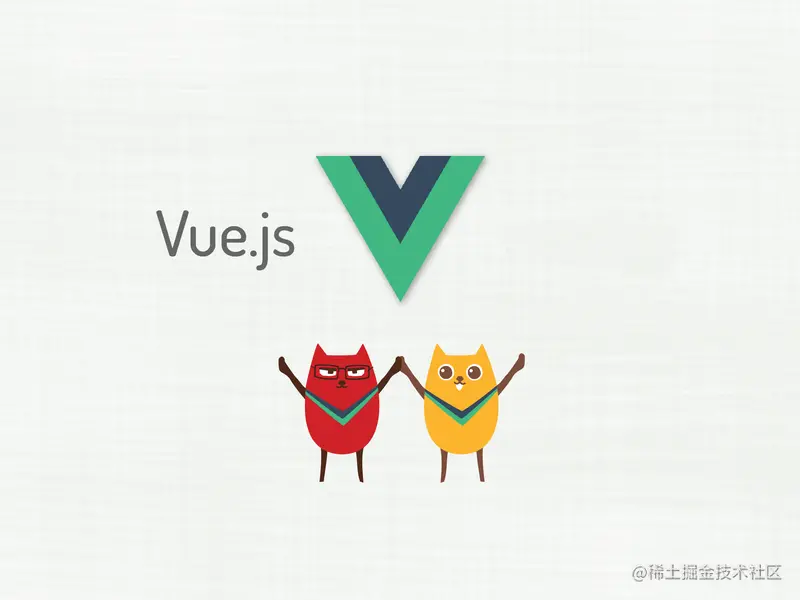Appearance
vue学习
 原文链接 vue
原文链接 vue
Vuex是什么?
Vuex 类似 Redux 的
状态管理器
,用来管理Vue的所有组件状态。为什么使用Vuex?
当你打算开发大型单页应用(SPA),会出现多个视图组件依赖同一个状态,来自不同视图的行为需要变更同一个状态。
遇到以上情况时候,你就应该考虑使用Vuex了,它能把组件的共享状态抽取出来,当做一个全局单例模式进行管理。 这样不管你在何处改变状态,都会通知使用该状态的组件做出相应修改。
下面讲解如何使用Vuex。
最简单的Vuex示例
本文就不涉及如何安装Vuex,直接通过代码讲解。
vue
import Vue from 'vue';
import Vuex form 'vuex';
Vue.use(Vuex);
const store = new Vuex.Store({
state: {
count: 0
},
mutations: {
increment (state) {
state.count++
}
}
})以上就是一个最简单的Vuex,每一个Vuex应用就是一个store, 在store中包含组件中的共享状态state和改变状态的方法(暂且称作方法)mutations。
需要注意的是只能通过mutations改变store的state的状态, 不能通过store.state.count = 5;直接更改,state相当于对外的只读属性。
使用store.commit方法触发mutations改变state:
vue
store.commit('increment');
console.log(store.state.count) // 1一个简简单单的Vuex应用就实现了。
在Vue组件使用Vuex
如果希望Vuex状态更新,相应的Vue组件也得到更新,最简单的方法就是在Vue的computed(计算属性)获取state
vue
// Counter 组件
const Counter = {
template: `<div>{{ count }}</div>`,
computed: {
count () {
return store.state.count;
}
}
}上面的例子是直接操作全局状态store.state.count,那么每个使用该Vuex的组件都要引入。 为了解决这个,Vuex通过store选项,提供了一种机制将状态从根组件注入到每一个子组件中。
vue
// 根组件
import Vue from 'vue';
import Vuex form 'vuex';
Vue.use(Vuex);
const app = new Vue({
el: '#app',
store,
components: {
Counter
},
template: `
<div class="app">
<counter></counter>
</div>
`
})通过这种注入机制,就能在子组件Counter通过this.$store访问:
vue
// Counter 组件
const Counter = {
template: `<div>{{ count }}</div>`,
computed: {
count () {
return this.$store.state.count
}
}
}mapState函数
vue
computed: {
count () {
return this.$store.state.count
}
}这样通过count计算属性获取同名state.count属性,是不是显得太重复了,我们可以使用mapState函数简化这个过程。
vue
import { mapState } from 'vuex';
export default {
computed: mapState ({
count: state => state.count,
countAlias: 'count', // 别名 `count` 等价于 state => state.count
})
}还有更简单的使用方法:
vue
computed: mapState([
// 映射 this.count 为 store.state.count
'count'
])Getters对象
如果我们需要对state对象进行做处理计算,如下:
vue
computed: {
doneTodosCount () {
return this.$store.state.todos.filter(todo => todo.done).length
}
}如果多个组件都要进行这样的处理,那么就要在多个组件中复制该函数。 这样是很没有效率的事情,当这个处理过程更改了, 还有在多个组件中进行同样的更改,这就更加不易于维护。
Vuex中getters对象,可以方便我们在store中做集中的处理。Getters接受state作为第一个参数:
vue
const store = new Vuex.Store({
state: {
todos: [
{ id: 1, text: '...', done: true },
{ id: 2, text: '...', done: false }
]
},
getters: {
doneTodos: state => {
return state.todos.filter(todo => todo.done)
}
}
})在Vue中通过store.getters对象调用。
vue
computed: {
doneTodos () {
return this.$store.getters.doneTodos
}
}Getter也可以接受其他getters作为第二个参数:
vue
getters: {
doneTodos: state => {
return state.todos.filter(todo => todo.done)
},
doneTodosCount: (state, getters) => {
return getters.doneTodos.length
}
}mapGetters辅助函数
与mapState类似,都能达到简化代码的效果。mapGetters辅助函数仅仅是将store中的getters映射到局部计算属性:
vue
import { mapGetters } from 'vuex'
export default {
// ...
computed: {
// 使用对象展开运算符将 getters 混入 computed 对象中
...mapGetters([
'doneTodosCount',
'anotherGetter',
// ...
])
}
}上面也可以写作:
vue
computed: mapGetters([
'doneTodosCount',
'anotherGetter',
// ...
])所以在Vue的computed计算属性中会存在两种辅助函数:
vue
import { mapState, mapGetters } form 'vuex';
export default {
// ...
computed: {
mapState({ ... }),
mapGetter({ ... })
}
}